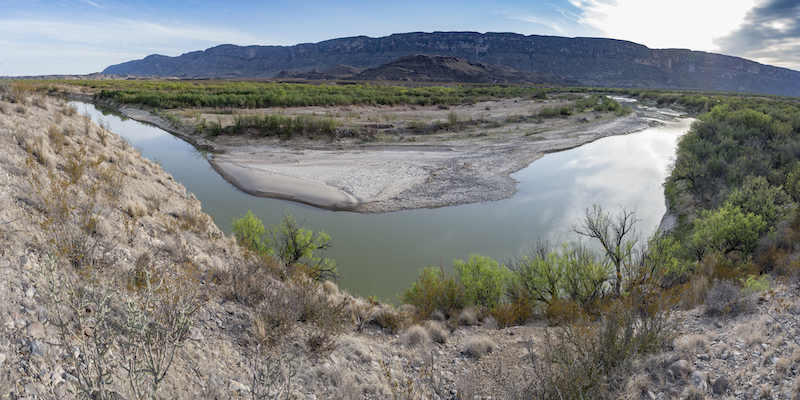
Photo Credit: Al Braden
Our neighbors in Louisiana are dealing with the effects of a catastrophic Category 4 hurricane, making landfall on the 16th anniversary of Hurricane Katrina. At the same time, the Environmental Protection Agency (EPA) is reviewing a regulation that directly impacts the Gulf Coast’s ability to weather increasingly dangerous storms.
There’s been a lot of buzz and misinformation around a legal term of art: “Waters of the United States” or “WOTUS” and what it means. Courts have decided what it doesn’t mean in a nonbinding context, and both the Obama and Trump Administrations passed rules defining it in regulations, but what happens next to the definition of this important term is up to the Biden Administration.
The Biden Administration is holding public meetings to get stakeholder feedback before deciding the fate of the Trump Dirty Water Rule and how the Biden Administration will evaluate which bodies of water are eligible for protection under the Clean Water Act. The Obama-era “Clean Water Rule” took effect on June 29, 2015, aiming to protect more waters in the definition of “Waters of the United States” but was reviewed (and ultimately repealed) by the Trump Administration under Executive Order 13778.
To fully understand the modern background for Waters of the United States (WOTUS) rule, we should start by looking at the Supreme Court case that started it all: Rapanos v. United States which was decided in 2006.
In the Rapanos case, the petitioner, Mr. Rapanos owned three plots of land containing wetlands that bordered, and had surface connections to, non-navigable tributaries of traditionally navigable waters.
Up until that point, “Waters of the United States” as a term was traditionally thought to mean those waters that had been navigable at some point, and the wetlands that were immediately attached to them. If a wetland is considered “Waters of the United States” then any development of that wetland requires a Clean Water Act § 404 Permit.
Mr. Rapanos developed the lands, harming the wetlands in the process, ignoring the guidance of the Michigan Department of Natural Resources, and without a § 404 Clean Water Act dredge-and-fill permit from the U.S. Army Corps of Engineers. The United States’ complaint alleged that the petitioners had violated § 404 of the Clean Water Act by discharging fill material into Waters of the United States. The trial court found that because the wetlands were adjacent to Waters of the United States, they were encompassed in the regulatory protection promulgated by the Corps. However, when the U.S. Supreme Court decided the case, a non-binding plurality opinion by the late Justice Antonin Scalia struck down the district court’s ruling, requiring that if a wetland is to be considered Waters of the United States, it must have a surface connection to some other body of water that is already considered Waters of the United States.
The Obama Administration’s Clean Water Rule expanded the definition of “Waters of the United States” to include those wetlands that contain a “significant nexus” to other Waters of the United States. Prior to the Obama Administration's expansion of the definition, the definition of WOTUS had last been codified in regulations in 1986 as “traditional navigable waters, interstate waters, all other waters that could affect interstate or foreign commerce, impoundments of Waters of the United States, tributaries, the territorial seas, and adjacent wetlands.” (source)
In 2017, the Trump Administration butchered the rule as part of a massive environmental deregulation movement, instead opting to insert the insufficiently-protective holding of the late Justice Scalia: in order for a wetland to be WOTUS, it must have a surface connection to some other body of water that is already considered Waters of the United States.
In 2020, the Trump EPA took a step further, codifying an incredibly destructive version of the rule that excludes more wetlands and rain-dependent streams. This unlawfully removed large numbers of wetlands and bodies of water from jurisdiction of the Clean Water Act. E&E has reported that “more than 70% of the U.S. waterways reviewed under the Navigable Waters Protection Rule were not found to be waters of the U.S., or WOTUS — that of the 55,519 waters and water features reviewed since the rule took effect in June of 2020, more than 40,000 did not qualify for federal protection under the Clean Water Act.”
So what now? As the Biden Administration holds public meetings and accepts public comments, organizations continue to put pressure on the administration to immediately suspend the Trump rule and reinstitute the 1986 version of the rule in the meantime. Additionally, the Sierra Club and others are pushing for a final rule from the Biden Administration that will ultimately be based on sound science: protecting and restoring our waterways through protecting wetlands that serve important ecological functions like flood prevention, habitat for wildlife, and protecting water quality. Finally, the final rule must recognize the important environmental justice concerns around our wetlands: including the indigenous tribes and marginalized communities that depend on them for survival. People of color are disproportionately impacted by loss of flood capacity, and that loss of flood capacity is directly attributable to loss of wetlands.
For more information and to submit comments to the Biden Administration on recommending stronger protection of our wetlands, the docket can be found here. And of course, stay tuned to the Sierra Club Lone Star Chapter’s blog for further updates as we track this.